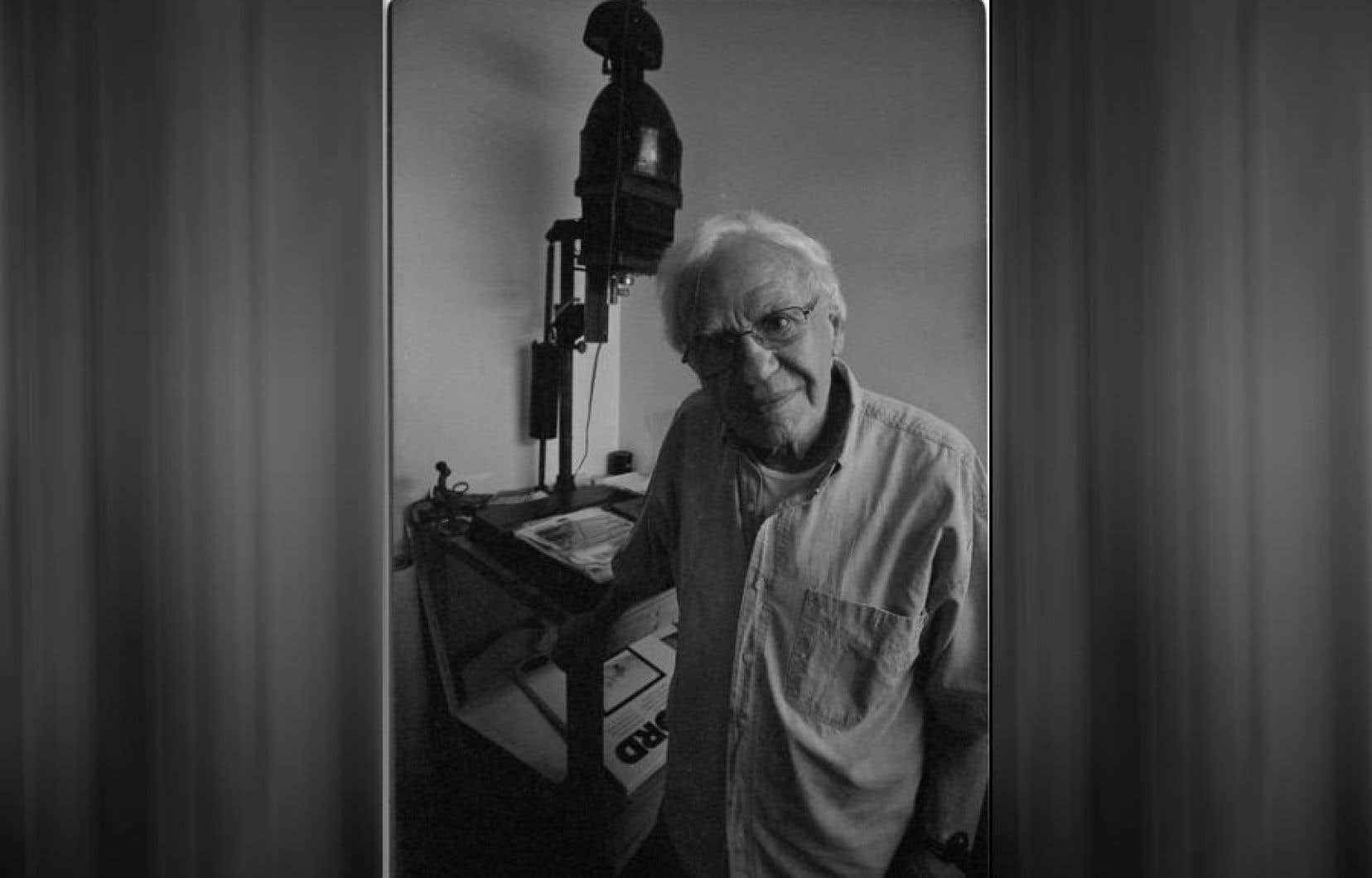Photographer George Zimbel died in Montreal at the age of 93. Long a photographer in the United States, where he was born, Zimbel was known in particular for his famous photo of Marilyn Monroe, the white dress raised by the wind from a subway entrance, on the occasion of a filming of Billy Wilder .
Prints of this famous image, made on September 15, 1954, can be found today in museums or at prestigious auctions. This photograph by Zimbel is one of the few icons of twentieth-century America. However, George Zimbel did not pay attention to it until very late, producing prints from 1976.
Most of his attention as a photographer was directed towards interests other than portraits of celebrities, although he photographed plenty of them in 1950s and 1960s America.
At over 80, he still cycled to his studio on Saint-Joseph Boulevard in Montreal to work. On the white walls of the small office that adjoined his darkroom, just as in the corridor that led to it, there were photographs of Marilyn Monroe, John F. Kennedy, Jacqueline Kennedy, Harry Truman, but especially those of strangers. , young and old, captured in a fraction of a second of their life which all in all said perhaps less about them than about the photographer.
“I am a photographer who belongs to the ‘modern’ era. I am first and foremost interested in people’s lives. Today, many photographers are more “contemporary”: they apply themselves to photographing a chair, an object, a nothing, something banal. I don’t really understand this approach, even if I respect it. But me, it’s the human that interests me. »
First settled in New York, George Zimbel shares the friendship of some of the best photographers of his time. “We were all doing documentary photography, nothing else. But everything was completely different between one and the other because the key to it all lies first in the personality of the photographer. We thought Garry Winogrand made fun of people a bit. Arnold Newman was fair, perfectly fair, you know? Me, I was rather the romantic of the lot…”
Zimbel had left the United States in the 1970s, after working for several prints, including the New York Times. His immigration was partly a protest against the Vietnam War, he will say. After a few years spent in Prince Edward Island, he finally settled in Montreal in 1980.
He maintained a strong affection for black and white photography, in his sense closer to writing. “I’ve done color photography, but for me, everything really goes better with black and white. I don’t understand today this passion that people have for the hyperrealism produced by digital devices. That’s fine…provided that’s what you really want to do! It’s not for me. »
A humanist photographer
At first he was easygoing, simple, open to discussion, curious about the world around him, faithful to his habits, like his frequentation of a small Asian restaurant where I often found him to discuss, on occasion interviews, but most often for the simple pleasure of discussing photography.
In his view, life was not as sharp and defined as the skilful juxtaposition of sensor pixels produced by the latest technological know-how presents. To the point where he postponed for a long time the purchase of a small digital camera with German optics that he had taken to carrying around with him at the end of his life.
Zimbel belonged to the family of humanist photographers born out of the social experience of the immediate post-war period. He goes to photograph in public libraries, train stations, on the street. “I was very lucky to photograph all of this. Today, I would never be granted permission to photograph in libraries, in schools or in bookstores… Nobody can take pictures anymore without getting bored! […] We don’t have the right, it seems, to photograph on an individual basis, even when you’re a photographer like me. But the police can do it! A store can film you! The city can watch you with surveillance cameras! That is possible! This is a ridiculous concept. A whole part of our visual history is lost because of this nonsense. »
In a documentary broadcast in 2016, George Zimbel noted that “we live in a curious time”. “On the one hand, power prohibits photographers from doing their job – it is no longer easy, for example, to take a picture in the street – while appropriating it afterwards very willingly. This same power is also authorized to place surveillance cameras everywhere”. We have never been so spied on thanks to the proliferation of images, while real photographers are increasingly struggling to work, despite their sharp eyes and their ability to document our common history.
Most of George Zimbel’s work is in black and white. He always works with the same type of film, loaded in the same two old Leicas, although he loved, at the end of his life, a digital equivalent.
Although very old, George Zimbel continued to go to his studio where he listened to music while working. He makes his prints himself, using old enlargers just saved from a fire that one day ravaged his studio, using photosensitive papers that have become rare since the digital revolution.
In 2015, the Montreal Museum of Fine Arts devoted an exhibition to him. Prints of George Zimbel’s photos are now owned by some of America’s great museums, including MoMA and the International Center of Photography in New York, as well as the Museum of Fine Arts in Houston, the Museum of contemporary art in Montreal, the Tokyo Metropolitan Museum of Photography. Several collectors have also acquired, over the years, some of his precious prints.
